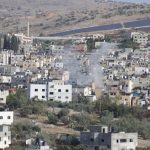Plans for a pedestrian bridge connecting Khalifa Al Kabeer Walkway to the Arad Fort walkway in Bahrain have been delayed due to ongoing roadworks affecting access to Bahrain International Airport. The Works Ministry has identified construction at Falcon Junction as a major issue, warning that building the bridge could disrupt crucial infrastructure and airport access. The proposed bridge, suggested by Muharraq Municipal Council member Ahmed Al Moqahwi, aimed to improve pedestrian access and increase foot traffic to the historic area. However, Works Minister, Ebrahim Al Hawaj, stated that further studies are needed before the project can proceed.
During a meeting with the Ministry of Municipalities Affairs, Al Hawaj highlighted that both potential bridge locations intersect with the Falcon Junction Development Project, which is the first phase of the main road upgrade leading to Bahrain International Airport. A study conducted with local officials revealed engineering difficulties and potential disruptions to infrastructure, especially concerning the main road to the airport. Al Hawaj emphasized the need for any construction to consider its impact on surrounding properties and services. Additionally, funding constraints are a significant issue, with the ministry unable to finance the bridge at this time.
The delay in building the pedestrian bridge has disappointed residents and local groups who had anticipated improved connectivity between the two walkways. While the Ministry acknowledged the Municipal Council’s initiative, they encouraged exploring alternative methods to enhance the area’s infrastructure. Local communities and interested parties are advised to stay informed as discussions about pedestrian access continue. Despite the setback, efforts are being made to find a solution that addresses the infrastructure challenges while ensuring safe and convenient access for pedestrians in the area.
As discussions continue on the construction of the pedestrian bridge, it is essential to consider the importance of enhancing pedestrian access and connectivity in Bahrain. The proposed bridge was intended to facilitate easier movement between Khalifa Al Kabeer Walkway and the Arad Fort walkway, both popular destinations for locals and tourists. By improving pedestrian infrastructure, the area could see increased foot traffic, promoting economic activities and tourism. The delay in the project highlights the complexities involved in urban planning and infrastructure development, underscoring the need for thorough studies and consultations before undertaking such initiatives.
While the delay may be disappointing, it is crucial that all aspects, including engineering challenges, infrastructure impact, and funding constraints, are carefully considered before proceeding with the construction of the pedestrian bridge. The collaboration between the Works Ministry, the Ministry of Municipalities Affairs, and local officials demonstrates the commitment to finding a viable solution that addresses the concerns raised. As discussions on pedestrian access continue, it is essential for all stakeholders to participate actively and contribute their perspectives to ensure that the final decision is well-informed and beneficial to the community.
In conclusion, the delay in building the pedestrian bridge connecting Khalifa Al Kabeer Walkway to the Arad Fort walkway in Bahrain underscores the importance of thorough planning and coordination in urban development projects. While challenges such as engineering difficulties and funding constraints have stalled the project, efforts are being made to explore alternative solutions that enhance pedestrian access in the area. By prioritizing the needs of the community and considering the long-term impact of infrastructure projects, Bahrain can create a more connected and accessible environment for its residents and visitors. Stay informed as discussions progress on this vital infrastructure development project.










